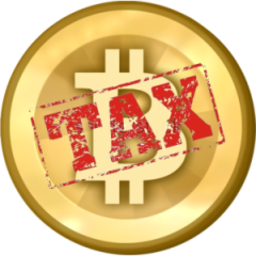Crypto Margin Trading, Strategies and Taxation
Margin trading with cryptocurrencies is common practice for many in the world of crypto. Jon Stead, a cryptocurrency CPA who specializes in margin trading accounting, joins us to give an in-depth overview of margin trading, the tax implications, and strategies for being a successful margin trader.
Be sure to tune in, or check out the summary below!
Host
Salvatore Vescio
Guest
Jon Stead (LOAK Tax)
Guest Contact Information
More Information
Episode Summary
Margin trading with cryptocurrencies is common practice for many in the world of crypto. Joining us today is Jon Stead. Jon is a CPA who specializes in cryptocurrency margin trading – he’s here to give us an in-depth overview of margin trading, discuss the tax implications, and share his strategies for being a successful margin trader.
Jon Stead turns raw data into financial statements for court cases and the IRS. He found this to be incredibly useful in the world of crypto. [00:30]
Jon: In particular the guy I work with all the time, Alex Kugelman – he does cryptocurrency representation. In a way I’m his mechanic; I go into the raw data and render it useful for him to make a case or to fill out a tax return.
Margin trading can be a complex concept to those unfamiliar with it. [03:17]
Jon: Margin trading is the process whereby you take a speculative position using a loan. So if you want to make a bet that Bitcoin is going to go up in value, for instance, instead of clearing out your savings account to buy Bitcoin, you would take out a loan and use the loan to buy the Bitcoin. That’s the difference between ordinary trading and margin trading – you are doing it with somebody else’s money.
Most of the time if you want to trade on margin, you need to have an account with a broker. In the case of a cryptocurrency margin, you need only have an account with a particular exchange that supports trading on margin. There’s going to be requirements for collateral. Just like in any loan, there’s going to be an interest expense.
When trading on margin, there are long positions and short positions. [04:52]
Jon: In plain English, if you want to take out a long position on margin: let’s say you think Bitcoin will go up – you borrow $1,000 from a bank and buy one Bitcoin that is trading at $1000. Then wait three months. At the end of three months, you have one Bitcoin and you owe $1,000 plus interest at the end of three months. Let’s say Bitcoin is now trading at $2,000 – you sell the Bitcoin and now you have $2,000 in cash and you owe $1,000 plus interest. You payback your thousand dollars, you pay the interest, and you keep the change.
Short positions are much more fun and much more dangerous. So let’s imagine that you want to short Bitcoin and Bitcoin is trading at 1000 bucks today. You borrow one Bitcoin. So now you’re holding one Bitcoin and you owe one Bitcoin. You sell the one Bitcoin for 1000 bucks and then hold the cash and then wait three months. At the end of three months you are holding $1,000 cash and you owe one Bitcoin, plus interest denominated in bitcoin. So let’s say that Bitcoin is now trading for 500 bucks. You take your thousand dollars cash and buy, let’s say 1.1 bitcoin for 550 – you pay back the one Bitcoin that you owe, pay back the 0.1 Bitcoin in interest and keep 440 US dollars. That’s a short position – you’ve borrowed what you think will go down, sold it for USD and wait, buy it back cheaper, pay back your interest and keep the change.
Understanding your margin trades becomes a lot easier if you can understand the resulting ledgers. [11:09]
Jon: The one that I that I find the easiest is the Kraken ledger. So I’ll use this as the example. All of the other exchanges that do margin trading are roughly similar.
When you export a Kraken Ledger, it’s going have every transaction that you did. Now the trades are going to come up in two pieces and the category is going to be called “trade”. Let’s say you bought ETH for 1000 bucks, it’ll say “trade”, “ETH”, “1”. The next line down will say “trade” “USD” “-1000”.
Now on the margin side, there are two categories that will show up. One of them is called “rollover”, and the other one is simply called “margin”.
Let’s take roll over first. If you are trading on margin and you don’t cash out your position, you’re essentially letting it ride. So if you go long on Bitcoin and you win, and now you’ve got 0.2 Bitcoin in your exchange and you want to let it ride and bet again, you’re going to be charged a rollover fee. The rollover fee is usually going to be denominated in crypto and there’s just going to be a giant ledger full of them.
The other thing that you’ll see is just simply called “margin”. The margin category is going to have a quantity value – the quantity value will either be positive or negative and it’ll have a denominator. So if you look in your Kraken ledger and it says “margin”, “2”, “BTC”, that means that you took out a margin position, you won your bet, and your winnings from that are 2 BTC.
If you want to be successful at margin trading crypto, Jon says four factors come into play [21:50]
Jon: If you’re going to trade on margin, and your approach is just to throw money at it and hopefully something sticks, you’re going to lose your money. But there’s another approach. And the other approach is to take it like a poker player. Now a poker player needs four things in play, and all of them need to work to win.
The first thing you need is a strategy. And the strategy has to actually be good. If your strategy isn’t going to work, it doesn’t matter. You’re going to lose money.
The second thing you need in order to win on margin, when you’re approaching it like a poker player, is discipline. Anybody can write down a strategy and believe it, but when things start getting difficult, a lot of people second guess themselves. You have to have your strategy and it has to be the one you work all the way through your trade. When your trade doesn’t work, use the feedback and reorient your strategy. Don’t go reorienting your strategy mid-trade. That’s like trying to reorient your golf swing in the middle of the swing – it’s not the right time for that.
The third aspect that you need is patience. If you don’t have any patience, you should not be trading on margin. And that’s because if you don’t have patience, you’re going to go doubling down on your bet while it’s still alive. Not a good idea, right? You need to have a long-term strategy approach, approach it with discipline, and also let the strategy work in real time and be patient about it.
The last thing that you need is liquidity, which is to say you need cash to backup your gain. The example from poker would be if you’re a good poker player, you have your proper strategy, you’re a disciplined, cool headed poker player and you have patience, – but you also need the chips to ride out a bad poker player’s lucky streak. Any bad poker player can hit a pot once or twice – it’s going to happen. If you are a good poker player and you don’t have the chips to ride that out, it doesn’t matter that you’re right in the long-term…you’re not going to be able to ride it out in the short-term.
Jon deals with a lot of high-volume traders in his work – I asked if high volume trading has any different implications, tax or otherwise, than regular trading. [30:09]
Jon: In a purely taxable transactions respect – if you trade a million times or you trade once, it’s the same principles in play.
Somebody who’s trading high volume – I would say that their risk of audit is higher in virtue of the volume. It’s fine to trade in that volume. You just have to have your ducks in a row.
For high-volume traders, having all of your data is especially crucial. [33:56]
Jon: I’ll tell you the hardest part of my job as a cryptocurrency accountant is dealing with missing records. There’s times where there’s just no records, but we know something must’ve happened. Working through that gap is incredibly difficult because we essentially have to perform an analytical posting of implied trades.
Jon utilizes his expertise with our previous guest, Alex Kugelman. If you want to reach out to Jon, the best way to do so is to get in touch with Alex. [38:14]
Jon: I work for Alex Kugelman. In the case that you want to talk to me, you’ve got to call or email Alex at Alex@KugelmanLaw.com. He’s also on Bitcoin.Tax if I’m not mistaken. Reach out to Alex, set it up through Alex, and he’ll put it together. The benefit of that is then the attorney-client privilege extends to me, through Alex.
If you enjoyed our podcast, be sure to check back frequently for more great discussions about a range of topics in the crypto space. If you have any questions for Jon Stead or Alex Kugelman, or want to schedule a consultation with them, they can be reached via Alex’s website kugelmanlaw.com, or via email at alex@kugelmanlaw.com.
Stay Connected to Get The Latest Podcast Alerts
Disclaimer
This website is provided for informational purposes only. The website does not constitute financial, tax or legal advice, and is not intended to be used by anyone for the purpose of financial advice, legal advice, tax avoidance, promoting, marketing or recommending to any other party any matter addressed herein. For financial or legal advice please consult your own professional.



0 Comments